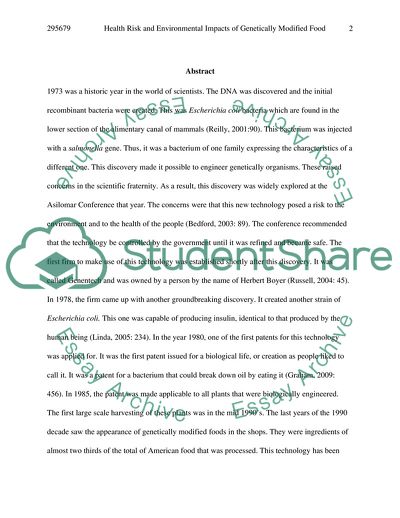Cite this document
(Health Risks and Environmental Impacts of Genetically Modified Foods Research Proposal, n.d.)
Health Risks and Environmental Impacts of Genetically Modified Foods Research Proposal. Retrieved from https://studentshare.org/family-consumer-science/1723605-are-there-any-health-risks-and-environmental-impacts-of-gm-foods
Health Risks and Environmental Impacts of Genetically Modified Foods Research Proposal. Retrieved from https://studentshare.org/family-consumer-science/1723605-are-there-any-health-risks-and-environmental-impacts-of-gm-foods
(Health Risks and Environmental Impacts of Genetically Modified Foods Research Proposal)
Health Risks and Environmental Impacts of Genetically Modified Foods Research Proposal. https://studentshare.org/family-consumer-science/1723605-are-there-any-health-risks-and-environmental-impacts-of-gm-foods.
Health Risks and Environmental Impacts of Genetically Modified Foods Research Proposal. https://studentshare.org/family-consumer-science/1723605-are-there-any-health-risks-and-environmental-impacts-of-gm-foods.
“Health Risks and Environmental Impacts of Genetically Modified Foods Research Proposal”. https://studentshare.org/family-consumer-science/1723605-are-there-any-health-risks-and-environmental-impacts-of-gm-foods.


